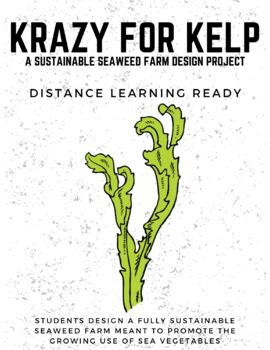Krazy For Kelp -- Marine Ecosystem and Sustainable Seaweed Farm Design Project
- PDF
- Easel Activity
What educators are saying
Description
Krazy For Kelp -- Marine Ecosystem and Sustainable Seaweed Farm Design Project
Background Information
In Krazy For Kelp, an environmental science project, students design a sustainable seaweed farm from the ground up. Seaweed farming is a growing industry as climate change threatens our areas for terrestrial agriculture. It also is a highly sustainable method of food production with a minimal carbon footprint.
Students should already have background knowledge before starting the project. They will apply their new knowledge to an authentic scenario given that seaweed companies are becoming more and more common. Students will work collaboratively to do the following throughout the project:
- Collaborate to brainstorm initial ideas
- Present initial brainstorm to the class
- Provide critical peer feedback to presenters
- Revise and edit first drafts based on received peer feedback
- Build a 3D physical model of their farm
- Present final drafts and model to the class
Project materials include...
- brainstorm sheet
- graphic organizers
- presentation formatting guide
- peer feedback form
- teacher grading rubric
- teacher notes
- links to supplemental videos and materials
Perfect for...
- online learning and distance learning
- project-based learning (PBL) classrooms
- high school (9th, 10th, 11th, and 12th grade)
- marine biology or marine science class
- biodiversity and sustainability
- climate change projects
- units on sustainability and agriculture
- building collaboration, communication, and design skills
- can be used as an online learning resource, distance learning, or in-person - includes fillable PDF so you can assign it to your Google Classroom
Looking for more? Check out our related products!
The Climate Change Agreement -- Paris Agreement Role Playing/Simulation
Sea Level Rise Analysis -- Climate Change and Sustainability -- PDF VERSION
Sustainable CEOs -- Build a Sustainable Business
2050: Sustainable Cities -- City Design Project
Want updates?
Be sure to click the green star on my store page to follow me and be the first to know about new and updated products!






